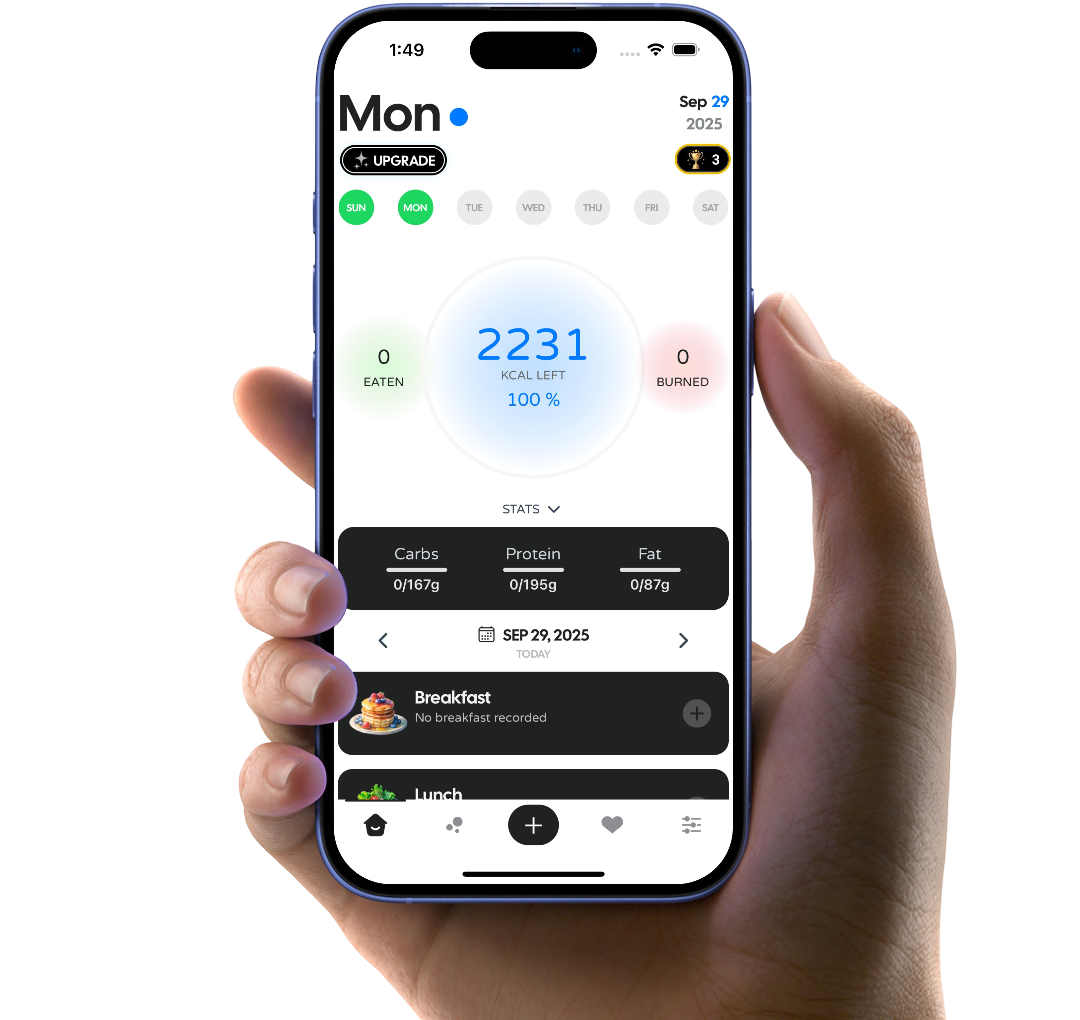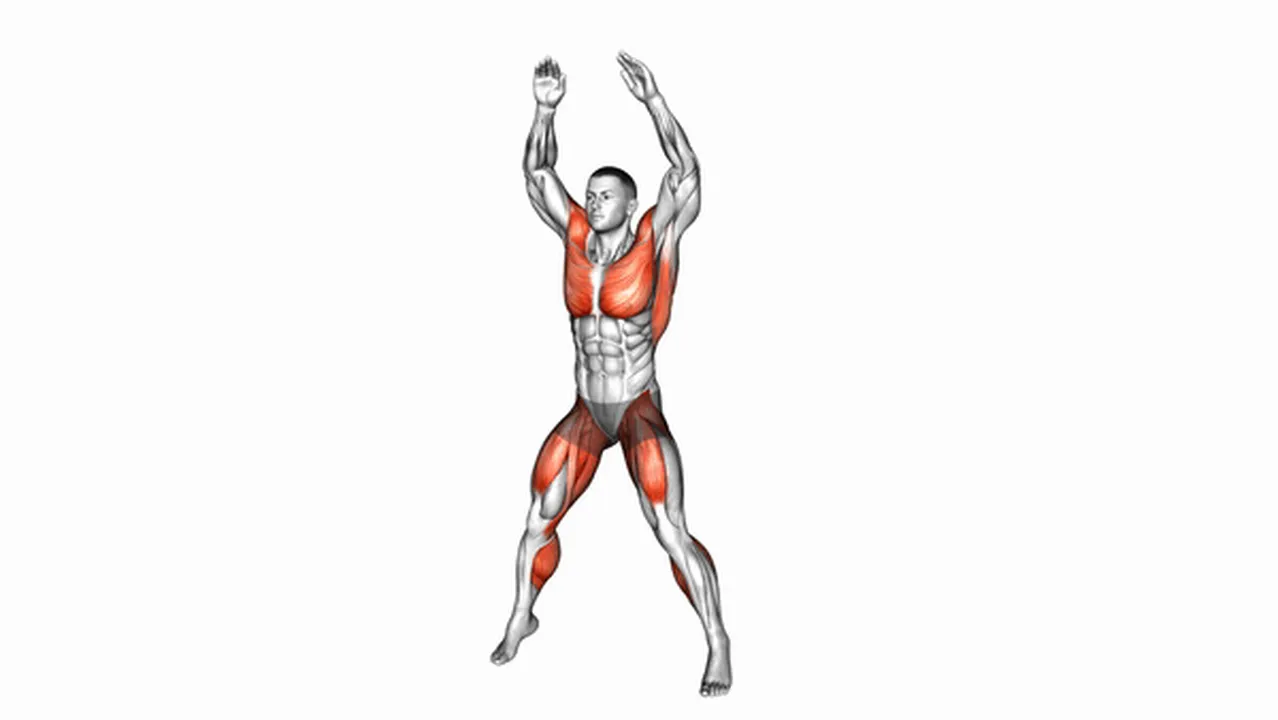Complete Jumping Jacks Exercise Guide
Learn everything about Jumping Jacks exercise including proper form, muscles worked, benefits, variations, alternatives, and common mistakes to avoid.
Muscles Worked & Equipment
Primary Muscles
Secondary Muscles
Equipment Needed
Muscle Categories

Introduction
1.
They're easy to learn, making them perfect for people just starting to exercise or for experienced athletes looking for a quick workout.
2.
Jumping jacks improve your heart health because they increase your heart rate, which is good for your overall fitness.
3.
Doing jumping jacks helps you get better at coordinating your body movements because you need to move your arms and legs together in a timed way.
4.
This exercise helps strengthen many muscles in your body, including your legs, arms, and core (your stomach muscles).
5.
You can use jumping jacks in different ways: as a warm-up before other exercises, as part of a workout that includes several exercises, or even as a whole workout by themselves.
6.
They're a fun way to add some energy and excitement to your fitness routine. Even short bursts of jumping jacks can be beneficial.
7.
To do a jumping jack, stand with your feet together and your arms at your sides. Jump your feet out to the sides while raising your arms overhead. Then, jump back to the starting position, bringing your arms back down. Repeat this movement.
8.
Remember to listen to your body and stop if you feel any pain. Start slowly and gradually increase the number of jumping jacks you do as you get fitter.
 Zylo AI
Zylo AI
Free Calorie
Counter
App







What are the benefits of Jumping Jacks?
1.
They make your heart work harder, which is good for your heart and lungs. This means your body gets better at using oxygen.
2.
Jumping jacks need you to use your arms and legs together at the same time. This helps you get better at controlling your body and keeping your balance.
3.
Because they're a fast workout, jumping jacks help you burn energy (calories), which can help you lose weight or stay at a healthy weight.
4.
Jumping jacks use lots of muscles in your legs, arms, and middle (core). This makes those muscles stronger and able to work for longer.
5.
You don't need any special equipment or a gym to do jumping jacks! You can do them anywhere, anytime.

How to do Jumping Jacks?
1.
The Jump: Jump up into the air. As you jump, spread your legs out to shoulder width. At the same time, raise your arms up above your head. Try to make your arms go straight up.
2.
Back to Start: Jump again, bringing your feet back together and lowering your arms to your sides. This completes one jumping jack.
3.
Keep Going: Repeat the jump and return steps for as many times as you want, or for a certain amount of time. You can decide how long you want to do them for.
4.
Important Tip 1: Try to jump at a steady pace. Don't jump too fast or too slow. A nice, even rhythm is best.
5.
Important Tip 2: Land softly on your feet. This will help to avoid hurting your feet or ankles. Bend your knees a little as you land.
6.
Important Tip 3: Keep your tummy muscles tight. This will help you to keep your balance and do the jumping jacks correctly. It makes the exercise easier on your body.

Common Jumping Jacks variations
1.
Semi Squat Jumps: These are like mini-squats with a jump at the end. You bend your knees slightly before jumping, making your legs and bottom stronger. It's great for building power and being quick on your feet.
2.
Star Jumps: Imagine jumping jacks, but bigger and more dramatic! You jump higher and spread your arms and legs out wide, like a star. This improves your coordination and gets your heart pumping.
3.
Knee Tuck Jumps: For these, you jump and bring your knees up towards your chest. This works your legs and your tummy muscles, making you stronger and more athletic.
4.
These exercises are a great way to mix up your workout and keep things interesting. Give them a try and find your favorites!

Alternatives to Jumping Jacks
1.
Jack Jumps: Imagine a jumping jack, but instead of a small jump, you do a big, powerful jump from a squat. This is like a jumping jack on steroids! It builds strong legs and improves your ability to jump high and far.
2.
Star Jumps: These are like jumping jacks, but you spread your arms and legs out wide like a star when you jump. This adds a bit more challenge and helps with agility and coordination.
3.
Semi Squat Jumps: Start by doing a small squat, then jump! This is less intense than a full jump squat, but still works your leg muscles and improves your jumping power.
4.
Jump Squats: This is a powerful exercise where you squat down and then jump straight up. It builds really strong legs and glutes (your butt muscles!), and helps with explosive power. It's great for athletes.
5.
All these exercises work similar muscles to jumping jacks—your legs and butt mainly—but they add variety to your workout. Try them all and see which ones you like best!
 Zylo AI
Zylo AI
Free Calorie
Counter
App







Common mistakes during Jumping Jacks
1.
Maintain Good Posture: Keep your back straight and your tummy muscles tight. This protects your spine and makes the exercise more effective. Slouching can strain your back.
2.
Control Your Arm Movements: Don't swing your arms wildly. Keep the movement smooth and controlled. This improves your balance and prevents injury.
3.
Breathe Regularly: Remember to breathe in and out steadily throughout the exercise. Holding your breath will tire you out quickly.
4.
Land Gently: Aim for quiet landings. Try to land softly on the balls of your feet to protect your knees and ankles. Heavy landings can hurt your joints.

Takeaway
1.
They improve your heart health because they get your heart pumping faster, like a mini-cardio workout.
2.
Jumping jacks also help build strength in your legs and arms. You use many muscles to jump and move your arms.
3.
It's important to do jumping jacks correctly to avoid injuries. Make sure your arms go up and down straight, and your legs go out to the sides, not too far.
4.
Start slowly and gradually increase the number of jumping jacks you do. Don't push yourself too hard, especially when you're first starting.
5.
Listen to your body. If you feel any pain, stop and rest. It's better to take a break than to get hurt.
6.
Jumping jacks are easy to do anywhere, anytime. You don't need any special equipment or a gym membership.
7.
Adding jumping jacks to your regular exercise routine can help you become healthier and fitter. They are a fun and effective way to exercise.
 Zylo AI
Zylo AI
Free Calorie
Counter
App






Disclaimer: The routines and schedules featured on our website are for informational purposes only and do not constitute medical or professional advice. Individual preferences, goals, and daily routines may vary significantly. Please note that some product links within our content are affiliate links. While not all routines have been explicitly endorsed by the individuals mentioned, we strive to ensure the accuracy and timeliness of the information we provide.
Disclaimer: Zylo AI(BR) does not provide medical advice, diagnosis, or treatment. Any information published on this website or by this brand is not intended as a replacement for medical advice. Always consult a qualified health or mental health professional with any questions or concerns about your mental health.
